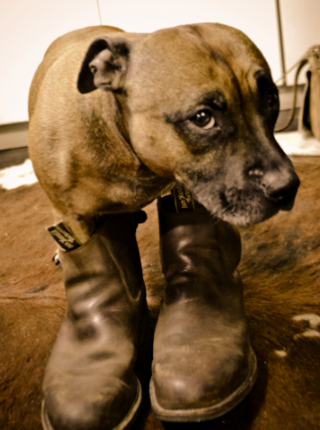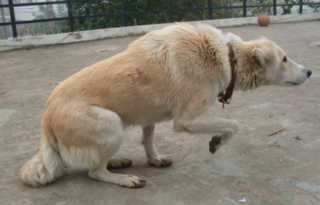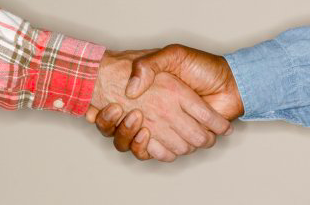Forgiveness
The "Guilty Dog" Look and Other Borrowed Signals
Body language is the most basic form of communication
Posted April 12, 2017
Over the last year, I have been asked many times about the "guilty dog look" discussed briefly in my recent book. This is a very interesting phenomenon that goes far beyond the dog-human relationship and actually reveals quite a bit about the nature of communication itself.
We most often observe a dog giving the guilty look whenever she has had an accident in the house, chewed up furniture or shoes, made a mess of the garbage, or accidentally bitten us too hard while playing.

The guilty look that dogs give is also called the "apology bow" and has been studied extensively in wolves by animal behaviorists including Marc Bekoff. While it may seem like a trivial action, it is actually involved in multiple fairly sophisticated social behaviors. As so often happens when studying behavior, or anything else in biology for that matter, a close look reveals far more complexity than initially expected.
In wolves, juveniles first begin to display the apology bow as they begin their social integration. Besides nursing, the first social interaction that wolves engage in is play, usually rough-and-tumble wrestling. You've probably seen dogs wrestle and they have inherited this play behavior from their wolf ancestors.
Wrestling and other forms of physical play are very important for wolves for several reasons, one of which is to help learn the social rules of being a properly behaved wolf. To the untrained observer, it may look like fighting, but it isn't and the rules help make sure of that. Rough playing is fine, but strong biting is forbidden and so is forcing a fight with a much smaller dog. There are other rules, too.
A dog that bites too hard is punished by temporary shunning. They are removed from the social unit and ignored for a time. In order to be reintroduced, the offending wolf must approach with an apology bow and be re-admitted into the group.

Dogs have inherited this behavior and they will use it after any kind of infraction that results in being punished. As social animals, they crave harmonious integration in the group and neglect or isolation is painful for them.
Sharp observers of animal behavior may remark that the "guilty look" has nothing to do with apology or guilt, but rather this is the submissive posture. Indeed, the actions associated with the apology bow mimic the action shown when a wolf indicates submission to a more dominant, higher-ranking wolf. The head hangs low, panting or smiling stops, eye-contact is avoided, and they literally put their tail between their legs. So which is it? Is the wolf (or dog) indicating apology or submission?

Well, both. This action is a "borrowed signal" because it can mean different things in different contexts. In a sense, an apology is indeed an expression of submission. "I was wrong; you were right." Nothing could be more submissive than that. In fact, dominant dogs and wolves rarely issue apologies (just like dominant humans!) and lower-ranking ones must apologize for even the slightest infraction.
Borrowed signals are found in other contexts as well. In primates, common signals for apologies and dispute resolution are less about submission and more about affiliation. In other words, apologies look like greetings, and this holds even in humans.

In the US, the most common action when two adults meet is the hand-shake. This is a friendly action, indicating a desire for affiliation, as opposed to rivalry. As a consequence, we pull this behavior out whenever we make up after a fight also. If two friends get into an argument and then wish to bury the hatchet and move on, they often seal the reconciliation with a handshake.
In Europe, the two-cheek kiss can substitute for the handshake in both settings, and in Asia, a stiff bow performs mostly the same functions. The key here is that signals of greeting are recycled during reconciliation because the ultimate message is the same: affiliation. The handshake/kiss/hug/bow says the same thing in both uses: I wish to be friends with you (again).
Facial expressions and body language are rich forms of communication among animals and a complex array of signals can be conveyed with just a few gestures. The key is context. Just like humans rarely misinterpret a smile from a snarl, animals surely understand the subtleties of their own body language.


